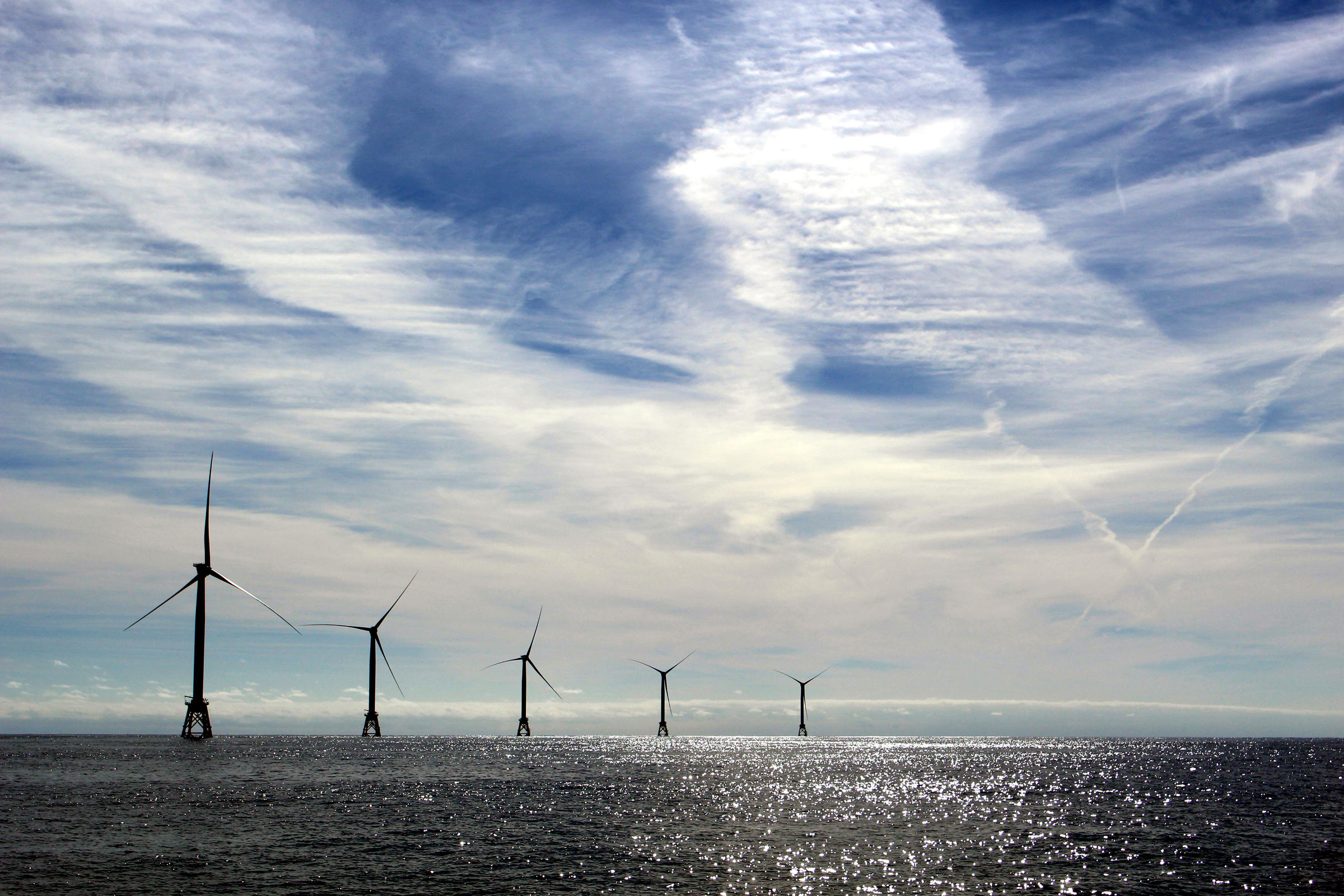An Auction For Wind Lots Off The Massachusetts Shore Breaks Records
A wind power auction for three plots of ocean off of the coast of Massachusetts broke a record last week for the highest price ever paid in a U.S. wind lease auction. But just three years ago, in 2015, those same lots were up for auction and didn’t sell. So what changed in the past three years? And what does it mean for offshore wind? Barbara Moran, the senior producing editor for WBUR’s environmental vertical, joined us to discuss what happened.
Interview Highlights
The following has been lightly edited for length and clarity.
John Dankosky: Explain how this auction works exactly.
Barbara Moran: So this is an auction run by the Federal Bureau of Ocean Energy Management and they had 19 registered bidders. They all bid online, so you couldn’t see who the bidders were, but you could see the bids as they were going up and up all day. They would update every 20 minutes or so, [and] everybody’s kind of glued to their screen watching this. It went all day Thursday, they stopped for the night, and they finished up on Friday.
And how much did these lots go for? What was the big news here?
The big news was that they sold for about $135 million dollars each, which was more than $1,000 per acre.
That’s a lot of money, but is this a surprise?
It’s a huge amount of money, and it was beyond surprising. They started the bids at $2 an acre, and it ended up at $1,000 an acre. It blew away the previous record which was set in 2016, where some leases off of the coast of New York sold for about $535 an acre. So this was huge. I mean people expected it would be big, but not this big.
It sounds like it was exciting.
It was actually, I kind of got swept in it. I don’t have any money in this game at all, but it was really exciting to watch and it went so far beyond people’s expectations. I was actually talking to a wind expert during the day and she said she couldn’t stop hitting refresh, everyone was just refreshing their screen over and over.
So these same lots were up for auction in 2015 and they didn’t sell. What happened then?
Three years ago, the government put these four lots up for auction. Two of them sold. One sold for a $1.50 an acre, one sold for a little less than $1 an acre, and two of them didn’t sell at all, they got no bids. And this is only three years ago. And the two that got no bids were divided up into three lots, and those were put on sale.
That was only a few years ago, and even back then in 2015, offshore wind was a thing, to a limited extent, in the United States, but it was huge in Europe. How is it possible that it was so valueless back then, and it’s so big right now?
That’s the big question that I went and asked everybody. People told me two things: one is the technology got better. The wind turbines got more efficient, and second, the big thing is there’s now there’s a guaranteed market. Massachusetts and some other states put a mandate up that they would buy a certain amount of power from offshore wind, and that made the whole venture much less risky.
So it’s more price competitive now, and of course, Massachusetts has created this market. What do you think this all means for the future of renewable after this auction?
As I tweeted out after the auction, I have seen the future and it is wind power. This really represents a turning point for offshore wind. It’ll be a big part of the energy mix in New England, and a big part of the economy of New England with all of the support services that are going to have to be on shore.
I just want to make it clear that these lots are different than the ones that there are already wind power plants planned for off of the coast of Massachusetts and elsewhere.
That’s correct, there are two lots that sold in 2015, and there are plans in the works, and one of them is further along and that’s the Vineyard Wind plot.
What do we know about the impact of offshore wind turbines if we’re going to get so many more off the coast of Massachusetts and New England?
Ocean noise is definitely a huge concern, not just from the wind turbine, but from the additional shipping. Vineyard Wind just released its environmental impact statement. They do say that there will be impacts on marine animals. They don’t think they will be severe, but that remains to be seen a little bit. The environmental impact statement is up for open comment in January, and I expect there might be a bit of push-back from the marine mammal people.
This is an edited interview from the December 20, 2018 episode of NEXT. You can listen to the entire show right now. Find out when NEXT airs throughout all of New England.

